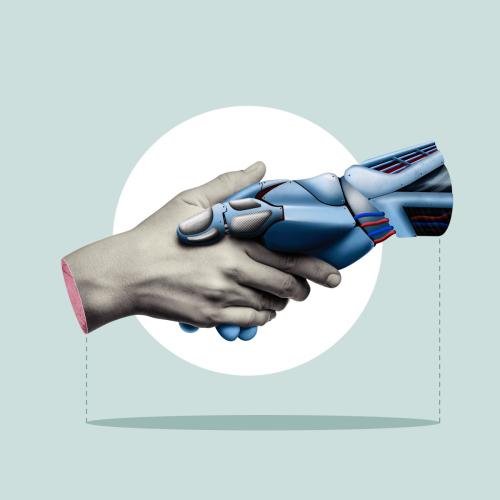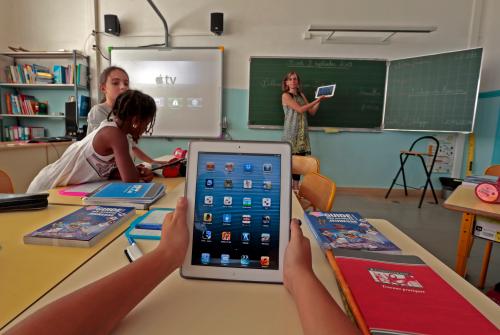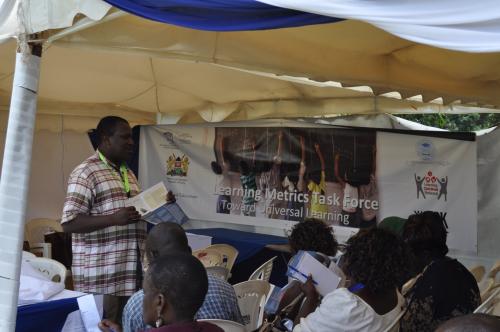Well before the invention of laptops and the World Wide Web, the Massachusetts Institute of Technology mathematician, computer scientist, and education visionary Seymour Papert realized that connected electronic devices could improve the educational experience of students, even for those who face poverty and geographical isolation. His recent death has a particular poignancy in Kenya where the extreme disparities in educational opportunities among different schools and students exacerbate already serious social and economic tensions. Several weeks ago, I traveled to Nairobi to gain some perspective on Papert’s vision.
Before joining MIT in 1963, Papert worked with Jean Piaget, the Swiss childhood developmental psychologist. Papert would eventually combine his early experiences with Piaget with his research at MIT to formulate ideas about the potential effects of computers on childhood education. Mitchel Resnick, an MIT professor and former student of Papert, said “Seymour Papert was the first person to see that the computer could be used to support children’s learning and development.” Papert eventually collaborated with Nicholas Negroponte, a co-founder of the MIT Media Lab, in developing One Laptop per Child, a well-known initiative intended to provide rugged, low-cost, low-power, and connected laptops to disadvantaged students around the world. Papert thought this sort of technological solution might mitigate some of the ill-effects of poverty and isolation experienced by many students in Kenya and elsewhere in the world.
Schools here in Kenya are usually seriously underfunded and inadequately staffed, especially in poorer and rural areas. Outside of a few elite schools, libraries are typically filled with outdated books from Europe and the United States. Adequate classroom materials are in short supply. Meanwhile, the schools servicing Nairobi’s growing wealthy and middle class as well as the private academies dotting Nairobi’s suburbs offer an entirely different story. Despite these disparities, all primary school students must take annual exams that determine placement in one of three levels of government secondary schools. For those assigned to a subpar secondary school, the chances of furthering one’s education are slim.
What is a governance perspective on this problem and how can information and communication technologies help?
In the language of governance studies, some parts of Kenya, including Nairobi’s massive slums, are areas of limited statehood, places where the state fails to provide basic collective goods, including security, infrastructure, water and sanitation and, in this case, basic education. Papert’s work points to ways of using digital technologies to ameliorate some of the effects of limited statehood. Mobile electronic devices taken to students in distant or severely disadvantaged schools offer teachers and students access to learning tools and educational content that would otherwise be out of reach. A 2011 study conducted by researchers from Harvard University and MIT noted that technology such as computer aided instruction or mobile phone aided instruction can boost student learning in rural and other disadvantaged areas. Several other studies have reached similar conclusions.
In Ghana, the Varkey Foundation and Dubai Cares have partnered with the Ghanaian Ministry of Education to provide 40 schools with a satellite dish, a solar-powered computer, a projector, a modern electronic blackboard, and a trained instructor to offer teacher training workshops every other week.
Here in Nairobi, a group of software developers, engineers and technologists, many of whom were involved in the creation of the well-known crisis mapping platforms Ushahidi and Crowdmap, and the creation of Nairobi’s iHub, have started BRCK. The BRCK is a durably built, brick-sized portable connectivity device intended for use where electricity and internet connections are unreliable. Another BRCK device called the Kio is an individualized, handheld device that runs on Android 4.4 KitKat OS. With a shock-resistant rubberized exterior, it is designed for the physical challenges found in a classroom. A Kio Kit consists of 40 Kio tablets housed in a water-resistant, secure transportation case. A Kit also contains headphones for all of the Kios and a BRCK for connectivity. A Kio Kit makes localized and culturally relevant educational content available to students in even the most remote physical location.

Technological solutions to governance shortfalls cannot solve all of the problems found in an area of limited statehood; they are at best palliative measures. Technological solutions even run the risk of becoming a distraction to efforts to fill governance gaps. Currently, the Kenyan education ministry is rolling out a massive digital literacy campaign that includes spending Sh17.6 billion (USD $173.5 million) on tablets for primary school pupils. This week, one official of the Kenya National Union of Teachers observed, “This government is having its educational priorities wrong. How do you buy laptops and not employ teachers?” Still, if done wisely, Seymour Papert’s vision of a digitally enhanced learning experience can help close some of the gap that exists among urban and rural, well-resourced and poor schools.





Commentary
Classroom technologies narrow education gap in developing countries
August 23, 2016